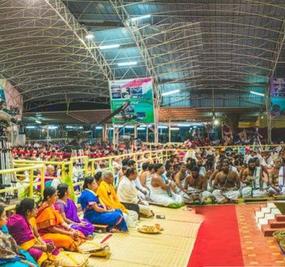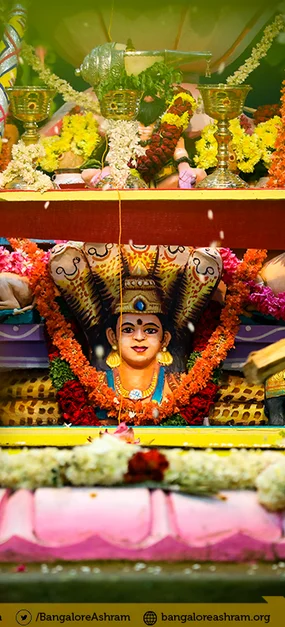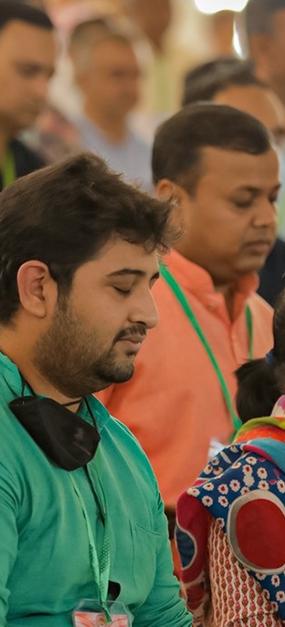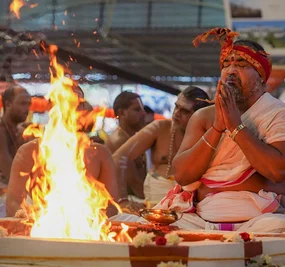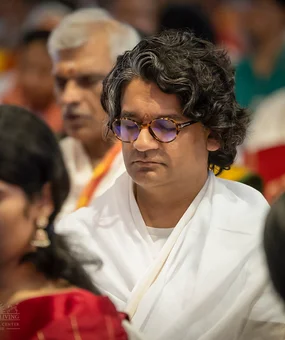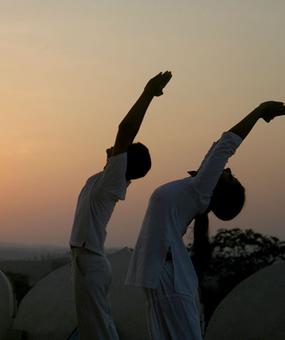Experience the Synergy
If you’re planning to fast this Navratri – either a beginner or a fasting pro, either way this is a time for your determination and willpower to be tested.
The body is intimately connected with the mind and the mind with the emotions. When the body is cleansed through fasting, the mind is also purified. It becomes calm, clear and peaceful. The mind-body complex experiences a new level of balance and depth, chorusing: ‘we’re in this together!’
While fasting, the mind and body might go through some restlessness. But the fact that you have actually reined in your taste buds and not given in to your hunger pangs makes you feel super about yourself too. Restlessness can be managed and the sense of achievement can be sustained by a few, light yoga stretches, bends, and pranayama.
Benefits of Yoga while Fasting
- Yoga helps the body to cope with the process of detoxification and energizes it.
- Through deep breathing and relaxation, the stressed-out nervous system shifts into healing mode.
Add a dash of yoga to your fast
Pranayama
- Sit in a comfortable position with eyes closed and back straight.
- Take a deep breath. While breathing in, try to expand the stomach.
- Hold the breath for a few seconds.
- Exhale slowly through the nostrils and allow the stomach to return to its natural position. Practice this ten to fifteen times.
Tip: It is suggested that you practice Pranayama twice to thrice a day.
Sheetkari Pranayama
This Yogic posture has a cooling effect on the body.
- Sit straight in a comfortable position and close your eyes.
- Place the top row of teeth on the lower row lightly.
- Separate the lips exposing the teeth.
- The tongue may be kept flat or folded against the soft palate.
- Breathe in slowly and deeply through your teeth. Make a hissing sound.
- Once the inhalation is complete, close your mouth and hold the breath for 10 seconds. Exhale the breath through the nose.
- This can be practiced after Pranayama or at any other time during the day. Eight to nine rounds are recommended.
Tip: If the body becomes too cold, stop the practice. Do not practice this Yoga posture if you suffering from a cold, cough or fever.
Sharanaghat Asana
This asana stretches the back muscles and relaxes the spine. There is a calming effect on the individual both physically and mentally.
- Sit straight in a comfortable position and with eyes closed.
- Place your palms on your thighs.
- Inhale deeply and raise your arms above your head.
- Exhale and bend forward from your hips and stretch your arms forward on the floor.
- Try to touch the forehead to the floor.
- It is suggested that about 5 rounds of this exercise are practiced.
Tip: If the body becomes too cold, stop the practice. Do not practice this Yoga posture if you suffering from a cold, cough or fever.
Spinal Stretch
This asana helps to re-energize the whole body, by removing stiffness and any blockage of energy.
- Sit comfortably in Vajrasana and keep your back straight.
- Join your palms above your head. Interlock your fingers and turn your palms upwards.
- As you inhale, stretch your back and hands upwards.
- Hold the breath for about ten seconds.
- Exhaling slowly bring your hands down.
- Repeat the exercise thrice.
Pawanmuktasana
This asana relieves acidity, gas and helps to get rid of constipation.
- Lie on your back with your feet together and arms beside your body.
- Inhaling deeply, bend both the knees and bring them towards your chest. Interlock your fingers around the shin and hug them closer to your upper body.
- As you exhale, lift your head and chest off the floor and bring your nose between the knees.
- Hold your position and take deep long breaths in and out.
- You may rock up and down or roll from side to side 3-5 times and then come back to the center.
- As you inhale, bring the head down.
- As you exhale, straighten the legs and relax.







